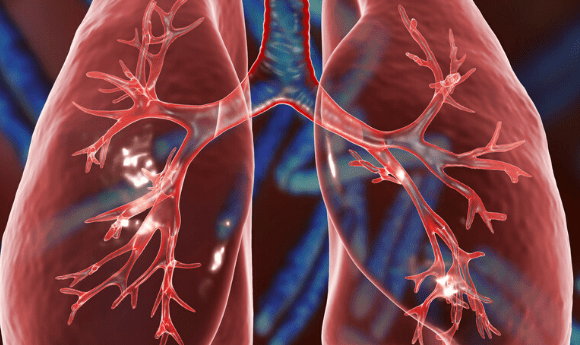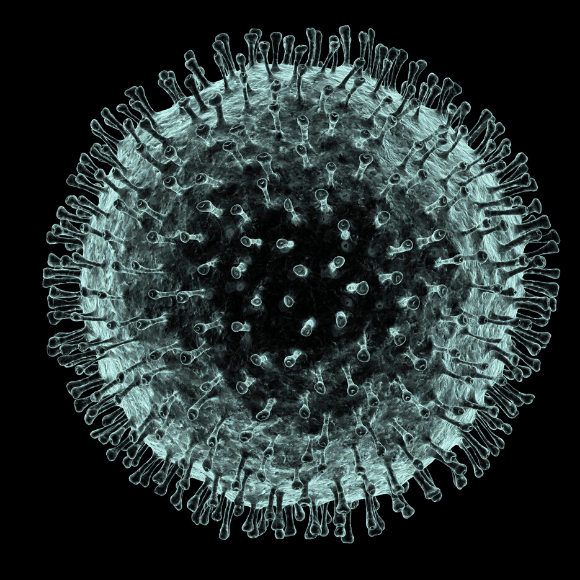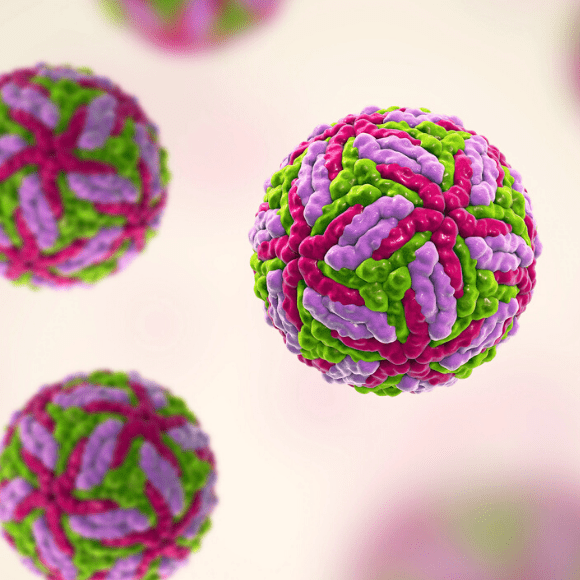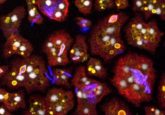Diagnosing TB infection; developments in addressing a global threat

The World Health Organization (WHO; Geneva, Switzerland) estimated that 10 million individuals contracted tuberculosis (TB) in 2018, resulting in a significant global disease burden. For World TB Day (24 March, 2020), we highlighted some of the recent advances in TB diagnostic techniques and discuss what the future may hold for TB control.
TB is the leading infectious cause of death worldwide, resulting in an estimated 1.5 million deaths in 2018. Caused by the bacterium Mycobacterium tuberculosis, TB is the target of many global programs, which aim to reduce the significant morbidity and mortality associated with the disease. However, the increasing threat of drug resistance and difficulty in diagnosing latent infection, as well as challenges in addressing the determinants of TB – for example, poverty and malnutrition – means TB is still considered a global threat [1].
TB or not TB?
Although the main route of transmission is via coughs and sneezes, approximately 90% of TB cases are asymptomatic. This presentation of the disease, known as latent TB, has historically been hard to diagnose.
Currently, many patients with latent TB are diagnosed through tuberculin skin testing and blood tests, including interferon–gamma release assays. However, these tests are only viable 2-6 weeks after exposure to the bacterium – thus requiring knowledge of contact with a TB patient. Additionally, this method cannot predict if or when the infection will progress to active TB [2, 3].
A multi-institution study led by researchers at University College London (UK), recently published in The Lancet Respiratory Medicine, identified eight transcriptional gene signatures present in the blood that were able to predict the onset of active TB infections before the presentation of symptoms. Through a systematic review of known gene signatures in patients with and without TB, the search yielded 17 possible candidates, which were then tested for in 11,126 blood samples taken from 905 patients. These patients tested negative for TB infection at the time the sample was taken, but subsequently yielded a positive result during follow-up testing [4].
The eight signatures (BATF2, Gliddon3, Kaforou25, Roe3, Suliman2, Suliman4, Sweeney3 and Zak16) were found to predict the onset of active TB within the 3-6-month accuracy guidelines stipulated by the WHO, and achieved a positive predictive value above the WHO benchmark.
As the eight signatures declined in sensitivity with increasing disease-free interval, the researchers believe testing for these biomarkers may identify people who are at risk of the disease and could be utilized to specifically target high-risk groups to aid in the management of the disease and limit its spread [4,5].
“About one-quarter of the world’s population is thought to have been infected with the bacteria that cause TB. The majority of these individuals remain well and cannot transmit the disease,” commented study author Mahdad Noursadeghi (University College London). “However, we currently do not know which people are most likely to develop TB disease after being infected. If we can identify these individuals, we can treat their infection more easily and prevent it from spreading to others” [5].
 Coronavirus: sorting the fact from the fiction
Coronavirus: sorting the fact from the fiction
Myths about the novel coronavirus, COVID-19, are spreading through the population faster than the disease itself, so what do you really need to know about the ongoing pandemic?
Activating early diagnosis and drug resistance testing
Active TB infection is defined by the presence of clinical symptoms, such as cough, fever and weight loss, as well as positive microbial cultures for acid-fast bacteria. Due to widespread dissemination throughout the body, patient infection is defined as pulmonary or extra-pulmonary TB infection [3].
Globally, 3.4% of all new cases, and 18% of previously treated TB patients, possess drug-resistant bacteria. Therefore, active TB infection is also classified by the degree to which the bacteria are resistant to antibiotic combinations. Quick identification of antibiotic resistance is key in preventing the development of further antibiotic resistance and restricting the morbidity associated with active TB infection. Furthermore, rapid initiation of treatment helps to limit the spread [1].
Early diagnosis and universal drug susceptibility testing are considered two of the main priorities of the WHO’s End TB Strategy. The current ‘gold standard’ rapid diagnostic test for TB is Xpert MTB/RIF (Cepheid Inc., CA, USA). The diagnostic utilizes real-time PCR technologies via a cartridge-based system. Samples of varying types, including sputum, lymph node aspirate and cerebrospinal fluid, can be taken to diagnose both pulmonary and extrapulmonary infection, with the results detecting both the bacteria and ripanfacin-resistance – the surrogate marker for multi-drug resistant TB [5]. Xpert MTB/RIF is cost-effective and also has proven utility for targeted testing of individuals, for example in prisons where TB burden and risk of cross-infection is high.
Novel approaches to overcome diagnostic challenges
Traditionally, sputum has been the most common sample utilized in microbiological identification of TB infection; however, sputum cultures do not provide a measure for how infective the affected individual is.
Recently, researchers at the University of Leicester (UK) and the University of Pretoria (South Africa) have invented a 3D-printed insert which can be added into a simple face mask and is able to identify the presence of both active and latent TB [7].
Initially, the researchers sampled 24 patients with confirmed TB. The patients wore the novel face mask for eight, 1-hour periods, over 24 hours. The 3D-printed insert contains a gelatin membrane that captures any exhaled bacteria. This is then removed from the mask and processed, with the final samples undergoing PCR to identify both the presence and the burden of the infection.
The results demonstrated that 86.5% of the previous microbiologically confirmed TB cases were positive using the mask, compared with only 20.5% of patients who tested positive through the use of traditional sputum samples.
The team also noted that the bacterium was exhaled during standard breathing and therefore, is transmissible even whilst the study participants were asleep, suggesting that coughing may not be required to spread the infection.
The researchers then performed an active case finding pilot study, where 20 participants wore a face mask containing a polyvinyl alcohol sampling matrix for 30 minutes, which was then processed using the Xpert MTB/RIF platform. The trial identified four patients who were positive for TB, despite having a negative sputum culture. The TB was only detected in sputum culture 6 weeks later. This further demonstrated the accuracy of the text and highlights that the mask-sampling method may be invaluable in the early diagnosis of TB infection.
“This is the first time that exhalation from prospective patients with TB can be captured in such a quick and simple way. This pioneering research provides the opportunity to save thousands of lives every year across the world by early detection of a treatable disease – its world-changing,” commented co-author Michel Barer (University of Leicester) [8].
 Turning the molecular machinery of a flavivirus against itself
Turning the molecular machinery of a flavivirus against itself
Flaviviruses including West Nile, Zika and dengue can result in significant morbidity and mortality. However, new research suggests that a viral protein may prove vital in the discovery of therapeutic agents and future vaccine development against them.
Identifying TB coinfection
Coinfection between TB and Human immunodeficiency virus (HIV) is well documented. The reduction in CD4 T cells due to viral infection means that patients who are HIV-positive are more susceptible to opportunistic infections, such as TB. As the immune response dampers with increasing viral load, latent TB can quickly activate and become the active form and/or disseminate throughout the body (extra-pulmonary TB), which is harder to diagnose and treat [9].
In 2017, the WHO estimated that 32% of HIV deaths were a result of TB infection [10]. Therefore, researchers continue to pursue tests for TB among patients with HIV. One example is the Novel Rapid Lipoarabinomannan Test (FujiLAM), which can detect TB coinfection in urine samples of patients who are HIV-positive. The research team, led by first author Stephanie Bjerrum (University of Southern Denmark, Odense, Denmark), tested biobanked urine samples from patients in Ghana. The preliminary study suggested that FujiLAM has a sensitivity of 74.2% and a specificity of 98.8% in patients with a CD4 count >100 cells/uL, highlighting that FujiLAM could soon be utilized in the early detection and treatment of TB in HIV-co-infected individuals, where the risk of morbidity and mortality is significantly higher [11].
Continuing TB control efforts
Patients in South-East Asia and Africa accounted for 68% of all reported cases of TB in 2018 [1]. However, it has been acknowledged that there is a significant gap in reporting from these countries, a limitation that could severely hinder the impact of the WHO’s End TB Strategy. Therefore, this year, the WHO released a mobile phone app, which allows users to look at the latest statistics in global TB data, allowing clinicians to track indicators and trends in patient epidemiology. This could ultimately improve patient management and control programs, as well as monitor and evaluate patient progress.
Currently, the most widely utilized control effort against severe forms of TB is the intramuscular vaccination known as the Bacille Calmette-Guerin or BCG vaccine; however, new research with non-human primates suggests that administering this vaccine intravenously could increase its protective efficacy [12]. Further research will be needed to determine if this route has the same benefit in humans, as well as whether it could be viable in low-middle income settings, where TB acquisition risk is at its highest.
Based on new evidence and continued efforts in both lab and field research, the WHO is hoping to reach its goals of an 80% drop in new TB cases and a 90% decrease in TB deaths by 2030 [13]. Continued research in the diagnostic arena will be crucial to achieving these goals.





